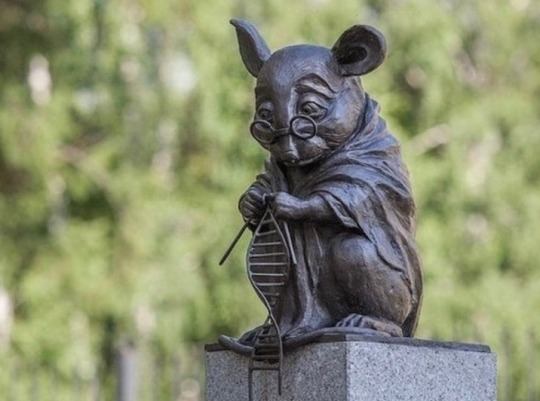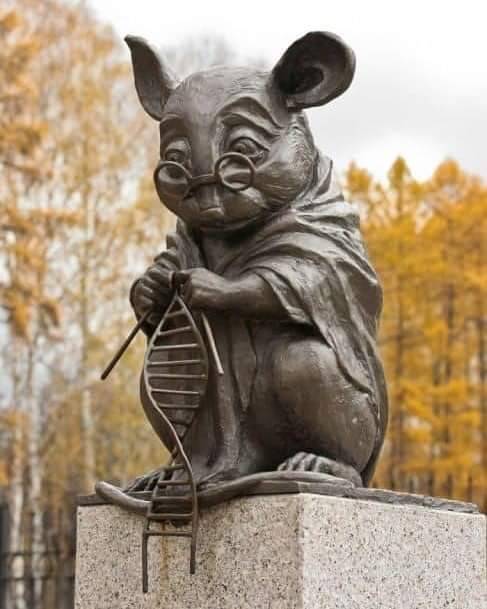#Andrew Kharkevich
Explore tagged Tumblr posts
Text

A bronze statue of a laboratory mouse knitting a double helix of DNA in order to honor all the mice that were sacrificed for genetic research to develop new drugs to fight diseases.
It was designed by Andrew Kharkevich and is located in Siberia, Russia.
The monument was completed on 1 July 2013, coinciding with the 120th anniversary of the founding of the city.
The monument commemorates the sacrifice of the mice in genetic research used to understand biological and physiological mechanisms for developing new drugs and curing diseases.
Sculptor Alexei Agrikolyansky, who created the statue, confessed that it was challenging to capture this moment, as the mouse was obviously not human.
Nevertheless, he had to produce a character with believable emotions while maintaining anatomical proportions, avoiding it looking like a cartoon character or a real mouse.
The DNA spiral emerging from the knitting needles winds to the left, symbolizing the still poorly understood Z-DNA - representing the scientific research that is yet to be done.
In contrast, the more common B-DNA winds to the right.
The very first photograph of DNA was captured by a woman named Rosalind Franklin (25 July 1920 – 16 April 1958) using X-ray technology, allowing James Dewey Watson (born April 6, 1928) and Francis Harry Compton Crick OM FRS (8 June 1916 – 28 July 2004) to accurately characterize the double helix.
While they went on to win the Nobel Prize in Physiology or Medicine in 1962, Franklin was not credited.
Sadly, she had passed away in 1958 from ovarian cancer, most likely caused by the high radiation exposure she endured while working with X-rays to capture the image of the double helix.
🤎🤍🤎
#DNA#mice#genetic research#Andrew Kharkevich#Alexei Agrikolyansky#scientific research#Z-DNA#B-DNA#Rosalind Franklin#James Dewey Watson#Francis Harry Compton Crick#double helix#Nobel Prize#science#Nobel Prize in Physiology or Medicine#laboratory mouse
18 notes
·
View notes
Photo

Tượng 1 con chuột đang ngồi đan các chuỗi xoắn ADN được đặt tai Siberi , Nga. Được thiết kế bởi Andrew Kharkevich ,nhằm tôn vinh những chú chuột đã chết trong các cuộc thí nghiệm ,nghiên cứu di truyền để tạo ra các loại thuốc trị bệnh mới.
0 notes